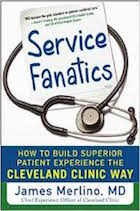The development of healthcare software means finding ways to connect at least five different systems in a seamless experience for all the participants. The stakeholders include patients, insurance companies, regulatory authorities, hospitals, and healthcare solution vendors. The challenge of creating a viable system resides in the numerous data transfer points.
How is healthcare software testing different?
The healthcare software system can learn from the framework of insurance systems, but with some notable differences related to the domain, which is far more regulated and sensitive than general insurance.
24/7 uptime
Emergencies don?t have a 9-5 schedule, and the software serving a hospital should be up and running 24/7, ready to record the patient?s needs, treatment and update the electronic healthcare records accordingly. Any downtime results in bottlenecks and over-working of the staff, negating the purpose for its existence, which is to speed up the medical process.
High regulatory compliance
Since the healthcare industry is heavily regulated, any software piece should mirror these requirements. HIPAA imposes strict rules regarding patient privacy, and there is no such thing as HIPAA compliant by default, you need to re-check the rules with each update. The FDA needs to approve the devices that use software and are employed in the medical activities, such as EKG, X-ray machines, CAT scans and more. Other regulatory authorities include, but are not limited to OASIS assessment, HCFA 1500, and UB92.
Cyber-security concerns
The IoT trend is growing, and medical devices are some of the early adopters. Yet, Wi-Fi and Bluetooth communications that are widely used by these devices are some of the easiest hackable environments. Until now, the accent was more on functionality than security, but this approach needs to change for future medical tools and the software powering them or patients? personal data, or even lives are at risk.
Software integration
There is no utility for isolated devices. A modern medical solution needs to be able to fit modularly in a comprehensive context. Devices need to communicate data to the primary database and update patient records. Doctors and nurses need fast access on a smartphone or tablet on the patient?s condition, treatment, and vital signs. Each individual device has a different operating system, network connection type, and transfer protocol. Testing needs to be performed between all possible flows, like payment processing and alterations to ensure that the system works in real-time and keeps up with demands.
Domain and system knowledge
Testers should first be instructed in the way the system works and what the limitations and rules are. Usually, the best way is to work directly with the end user, since only a member of the medical staff can identify possible flaws, especially in the day to day tasks.
What is the testing workflow for healthcare?
As previously described, the software serving the healthcare industry is composed of several individual pieces that need to coordinate with each other. A recent article identifies five different systems that require testing, corresponding to each stakeholder previously described. On top of these, come the testing of the regulatory compliance, performance testing and other various check-ups.
Testing order: 10 steps
It is important to note that unlike other domains, the healthcare software needs to be tested in a certain order that follows the patient flow through the system.
- The first system that should be up and running is the providers. This means testing data entry, saving, and modifying entries. Focus on entering all the different provider types, login protocols and validate recordings. Make sure that there is positive and negative testing (invalid credentials, mistakes) as well.
- Second, comes the broker (insurer) system. Tests are similar to the previous step.
- Once the vendors and agents? systems are ready, the member system can be developed and connected with the two previous ones. Tests here should verify enrolling as a member with all the necessary details, removing or adding dependents, generating and processing payments.
- Next, the claims system. This one needs to be connected to the members and providers systems. Claims should contain the proper codes for disease and medication and should generate errors for the wrong data inputs. Claims are based on scenarios; therefore, a valid system includes editable scenarios.
- The last system in place is the financial system, which is linked to all the previous ones. It should allow member registration, modifying and deletion, and to connect the account with broker and payment history as well as with medical records.
- Regulatory compliance should be embedded in each of the five systems since both medical and financial data are flowing around. Encryption should be used for all communications and a secure way of authentication set in place.
- Integration testing is, as discussed, the most important aspect and each portal (members, providers, brokers). Testing at this step is subject to rigorous communication validation between all the components.
- Performance testing comes next, and it deals with 99.99% uptime, handling the incoming volume, identifying and removing bottlenecks and remaining stable even when stretched to the upper limit, as software testing company A1QA explains.
- Functionality testing checks that the outputs of the system are the standard ones, to make it sure it works correctly, especially related to computations of payment primes.
- User experience testing ensures that the software is not only doing its job, but it is intuitive and easy to use even by less experienced staff members.
Future directions of healthcare testing
Healthcare testing, like most of the software testing industry, will become more automated. This allows faster regression cycles, more rapid error detection and better time to market. Of course, such efficiency leaps should translate into cost savings. Most likely, medical services will not become cheaper, as the resulting funds will be reinvested into other sensitive areas like safety, compliance, and security. With the rise of the Big Data and IoT, testing will concentrate on integrating such tools into the typical workflow of the hospital.









